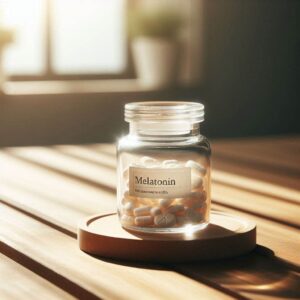Gamma-Linolenic Acid (GLA)

Gamma-linolenic acid (GLA) is a type of omega-6 fatty acid that is commonly found in different seeds, most commonly borage, hemp, evening primrose and black currant seeds. The six in omega-6 designates the distance from the end of the fatty acid chain where the first kink occurs. When utilized by the body, most omega-6 fatty acids are processed into compounds that promote inflammation. However, GLA is the exception to this rule, and is processed into anti-inflammatory compounds after consumption.
Due to its anti-inflammatory potential similar to omega-3 fatty acids, GLA has been studied for its anti-inflammatory effects in a number of different disease conditions.
Diabetic Neuropathy
As a condition, diabetic neuropathy is caused by damage to the nerves throughout the body due to elevated blood sugar. Typically, diabetic neuropathy starts as a tingling or burning in the hands and feet and slowly spreads upwards. The condition is often difficult to treat and standard medications usually only help to mitigate the symptoms. Keeping blood sugar under control or even reversing the underlying diabetes can help to stop the progression of the condition.
Interestingly, a number of natural treatments appear to hold promise for treating diabetic neuropathy, including GLA. A meta-analysis from 2024 found that GLA was the treatment with the highest probability of being helpful as compared to lipoic acid, another natural treatment (Prado 2024). The data appeared to indicate that GLA was safe and effective for improving symptoms of diabetic neuropathy.
Rheumatoid Arthritis
The two most common types of arthritis are osteoarthritis and rheumatoid arthritis. Osteoarthritis is generally considered to be the wear-and-tear damage to the joints that comes with aging. By contrast, rheumatoid arthritis is an autoimmune condition that causes joint pain and damage among other symptoms.
As a treatment for rheumatoid arthritis, the research has been a bit mixed. However, a review from 2009 found that GLA does appear to be effective, as long as you use enough. In the studies that used lower doses, GLA was not helpful. Yet when patients took doses equal to or greater than 1400 mg per day, rheumatoid arthritis symptoms were reduced (Cameron 2009). Unfortunately, there hasn’t been much additional research on GLA for rheumatoid arthritis since the review was published.
Premenstrual Syndrome
Premenstrual syndrome or PMS is a common condition that presents with a constellation of symptoms related to the menstrual cycle. Clinical studies of GLA generally suggest that it may be helpful for reducing PMS symptoms.
Older studies have shown success in treating PMS symptoms with GLA where other standard treatments failed (Horrobin 1983). A study in women with severe PMS also found GLA to be helpful (Puolakka 1985).
One negative study found GLA to improve PMS symptoms, but the improvements were comparable to the placebo response and considered non-significant (Khoo 1990). However, the dose utilized was quite low, being under 400 mg of GLA per day. One of the most recent trials did find benefits beyond placebo for college women with PMS (Saki 2015). Similar to rheumatoid arthritis, the effective dosing in the study was 1500 mg per day.
Eczema or Atopic Dermatitis

Eczema or atopic dermatitis is a type of skin rash that can cause red, irritated and itchy skin. Treatments often focus on steroids to decrease inflammation, but steroids can have significant long-term side effects, including thinning of the skin.
Research into GLA as a treatment for atopic dermatitis has been around for decades, although the benefits appear to be fairly modest. The most recent analysis of the literature concluded that there was no statistical benefit from GLA. However, looking more closely at the data, there was a trend towards benefits that almost reached significance (Bamford 2013). If I were to use GLA for atopic dermatitis, I would likely combine it with other therapies like topical castor oil or topical licorice root and not rely on GLA alone.
Conclusion
GLA is an omega-6 fatty acid that has anti-inflammatory benefits. A number of conditions appear to potentially benefit from GLA supplementation, including diabetic neuropathy, rheumatoid arthritis and PMS. Effective dosing, in most cases, is likely at least 1400 mg per day.



